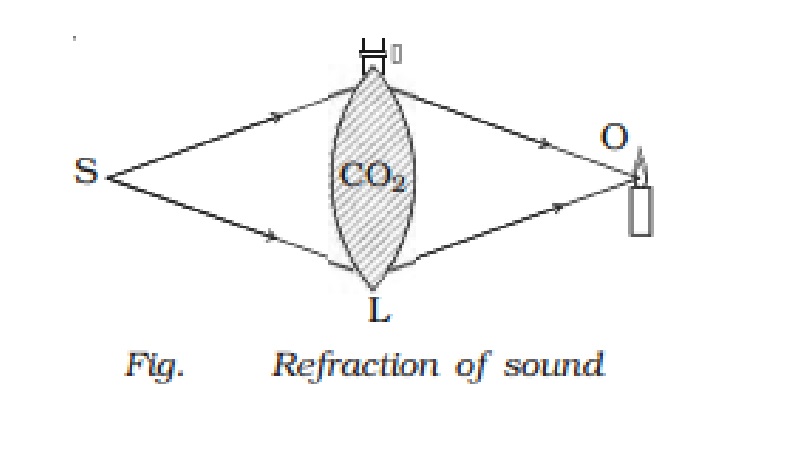Chapter: 11th 12th std standard Class Physics sciense Higher secondary school College Notes
Applications of refraction of sound

Refraction of sound
This
is explained with a rubber bag filled with carbon-di-oxide as shown in Fig..
The velocity of sound in carbon-di-oxide is less than that in air and hence the
bag acts as a lens. If a whistle is used as a source S, the sound passes
through the lens and converges at O which is located with the help of flame.
The flame will be disturbed only at the point O.
When
sound travels from one medium to another, it undergoes refraction.
Applications of refraction of sound
It is easier to hear the sound during night
than during day-time During day time, the upper layers of air are cooler than the
layers of air near the surface of the Earth. During night, the layers of air
near the Earth are cooler than the upper layers of air. As sound travels faster
in hot air, during day-time, the sound waves will be refracted upwards and
travel a short distance on the surface of the Earth. On the other hand, during
night the sound waves are refracted downwards to the Earth and will travel a
long distance.
Progressive wave
A progressive wave is defined as the onward transmission of the vibratory motion of a body in an elastic medium from one particle to the successive particle.
Related Topics